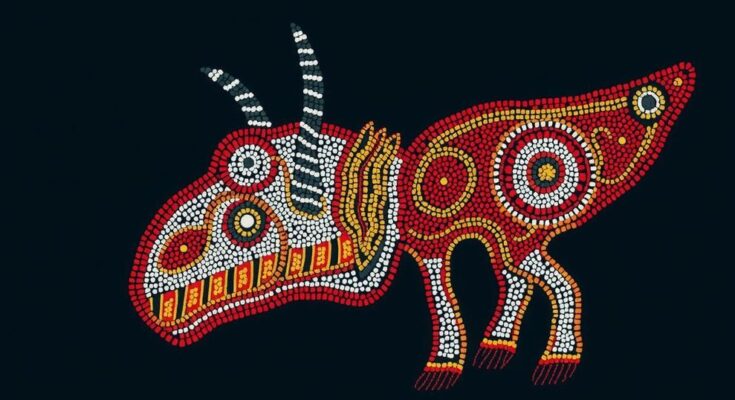Significant Warlpiri cultural artefacts will return home after more than fifty years in Germany. The handover will take place in Frankfurt, marking a historic moment for the Warlpiri community. These artefacts are crucial to the Warlpiri People’s cultural heritage, representing a deep connection to their traditions. The event emphasizes restorative collaborations aimed at preserving indigenous history and knowledge.
The Warlpiri community is set to celebrate the return of significant cultural artefacts that have been away from their homeland for over fifty years. On Friday, these treasured items, originally documented by Austrian researcher Irenäus Eibl-Eibesfeldt in Yuendumu in 1972, will be handed back to their Traditional Owners. The artefacts, which include sacred and everyday objects, carry immense historical importance for the Warlpiri People, symbolizing their rich heritage and connection to the land. Fifty-two years ago, two Warlpiri men, Jimmy Jungarrayi Spencer and Banjo Jungarrayi Tex, facilitated the researcher’s access to their community. Their contributions allowed for a profound recording of Warlpiri customs, a journey now coming full circle as Dr. Bernolf Eibl-Eibesfeldt, Irenäus’s son, returns the items during a ceremony in Frankfurt. Elders from Yuendumu traveled for over 20 hours to witness this historic occasion. The handover will take place at the Senckenberg Research Institute in Germany, where Dr. Eibl-Eibesfeldt will present sacred objects like boomerangs and knives that once belonged to the Warlpiri people. Notably, the return of these artefacts fosters international cooperation and enhances cross-cultural understanding. As Warlpiri Elder Ned Jampitjinpa Hargraves notes, this day represents a significant act of respect and acknowledgment for indigenous heritage. Young Warlpiri leader Derek Japangardi Williams expressed excitement upon the artefacts’ return, emphasizing their cultural significance. He highlighted their intended use in traditional ceremonies, ensuring that they will reclaim their rightful place in the community’s cultural practices. The son of Banjo Jungarrayi Tex, Nelson Tex, echoed these sentiments, marveling at the sentimental value of the objects that resonate with both his father’s legacy and the future of his children’s cultural education. Elders will also view previously unseen footage filmed by Professor Eibl-Eibesfeldt during his visits to Yuendumu, connecting past generations with the present. This digitized footage will serve as a vital resource for Warlpiri youth, fostering cultural knowledge that spans back decades. These artefacts and recordings are not just historical items; they are living representations of identity and tradition for the Warlpiri community. Senator Malarndirri McCarthy highlighted the significance of this event in addressing historical injustices regarding Indigenous cultural heritage. The collaboration between the Warlpiri Project, the Australian Institute of Aboriginal and Torres Strait Islander Studies, and international partners showcases a commitment to repatriation. In light of this return, the Warlpiri will house the artefacts at the South Australian Museum before transferring them to a new cultural center in Yuendumu, paving the way for ongoing engagement with their ancestral history.
The return of Warlpiri artefacts is a pivotal moment in the preservation and celebration of Indigenous culture in Australia. These items, taken during a period when Indigenous voices were often marginalized, highlight a significant shift towards recognition and respect for Aboriginal heritage. The artefacts had been part of a private collection in Germany for over fifty years, symbolizing lost connections now mended through joint efforts of various institutions and individuals dedicated to cultural repatriation. The involvement of the Warlpiri community in this process elevates the narrative of cultural preservation amid a broader context of healing and truth-telling within Australia’s history.
The return of Warlpiri artefacts signifies more than just the retrieval of physical objects; it is a celebration of identity, culture, and heritage. This event brings together past and present, facilitating healing and fostering a deeper understanding of indigenous practices. With these artefacts, the Warlpiri community can continue to pass on their traditions and narratives to future generations, ensuring their cultural legacy endures.
Original Source: nit.com.au



